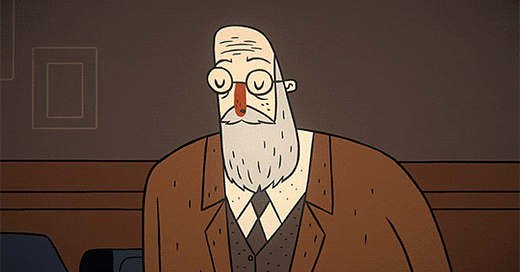The Mystical Experience
What it is, what we can learn from it, and some of my personal encounters with mystical consciousness.
It was the 4th of December 1963 when Bill Richards, a 23 year-old theology student at the University of Gottingen in Germany, was getting an injection of psilocybin in a dark basement room on the campus. Not knowing much about the undergoing research into psychosis, and never having heard of the drug synthesised by Sandoz, he was told by friends who had also been on the trial to expect insights into his early childhood.
Instead, he was immersed in an “exquisitely beautiful, multidimensional network of intricate, neon-like geometric patters”. He saw “incredibly detailed imagery best described as Islamic architecture and Arabic script”, about which he didn’t know anything. Once he felt himself melt into the visuals, he experienced consciousness outside of time, “a pinnacle from which history could be viewed.” His awareness was “flooded with love, beauty, and peace beyond anything I ever had known or wildly imagined to be possible. ‘Awe’, ‘Glory’, and ‘Gratitude’ were the only words that remained relevant”. Coming out of the experience hours later, he scribbled on a piece of paper by his bed “Reality is. It is perhaps not important what one thinks about it!”.
Days later, he reviewed his note and was amused by the banality of it. It felt like he’d written “water is wet”, and thought of it as a profound insight even though any idiot knows it. But what he was trying to capture was the very essence of a mystical experience.
“The mystical experience is nothing other than becoming aware of your true physical relationship to the universe.” - Alan Watts
If only it were that easy, Mr. Watts. In fact, it’s quite common to hear experienced psychonauts talk about mystical experiences the same way they’d tell you about their breakfast. “Yeah, so then I became everything and I was nothing and it was so beautiful, wanna grab a beer?”
But mystical experiences are not easy to explain, or understand if you’ve never had one - in fact, one of their core characteristics is ineffability. Even Freud, who we can all agree was a brilliant man in many respects, couldn’t wrap his little head around them. He saw them as a possible memory of union with the mother’s breast (classic Freud), but later acknowledged “there may be something else behind this, but for the present it is wrapped in obscurity”.
So let’s try to unpack the mechanisms, unique benefits, and some examples of mystical experiences.
Keep reading with a 7-day free trial
Subscribe to Begin Again to keep reading this post and get 7 days of free access to the full post archives.



